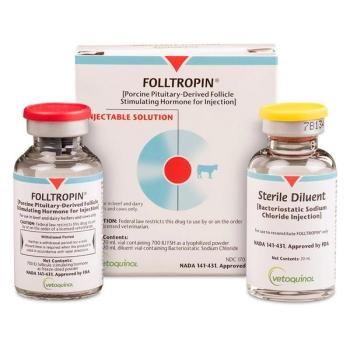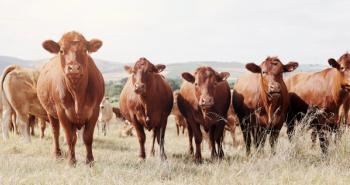
Major study to document, measure food animal practitioner issues
Associations form coalition to ensure veterinarians remain involved in nation's food supply systems
CHICAGO — A study ordered by a commission of six top veterinary groups is expected to provide telling data on trends in food animal veterinary medicine and assess student motives when mulling careers in the field.
The results could lead to profound changes in recruitment, curriculum, identification or employment opportunities, officials say. Anecdotal evidence from teaching institutions and field practitioners shows the number of food animal veterinarians dwindling in the United States. Recognizing an increased need to maintain food safety, the Food Supply Veterinary Medicine Coalition (FSVMC) has commissioned a $300,000 project to study the issue, headed by Kansas State University (KSU) researchers.
"This study is necessary because we don't even know how many veterinarians working with food animals are out there," says Dr. Rod Sydenham, past president of the American Association of Bovine Practitioners (AABP). "You hear all the time about the shortage, but is there a shortage or a maldistribution of veterinarians? We want to make sure the industry is working on something other than guessing."
FDA USDA want input on proposed BSE safeguards
About the commission
FSVMC was created to assess current and future demands that food supply safety will have on the veterinary profession and the apparent shortage of practitioners entering the field. Along with AABP, the American Veterinary Medical Association (AVMA), Association of American Veterinary Medical Colleges, Academy of Veterinary Consultants, American Association of Swine Veterinarians and American Association of Small Ruminant Practitioners back the commission.
The study is geared to change recruiting and training methods to accommodate positions in food animal medicine and train commodity groups and government agencies in new and expanding roles, Sydenham says.
"So far there hasn't been any real science-based work done on what the needs are and the methods to meet those needs," he says. "Our objective is to ensure we will continue to enjoy the level of food quality and food safety that we do."
Research goals
The study is comprehensive, officials say, comprised of multiple research phases addressing the demand for, and the availability of, food supply veterinarians in the United States and Canada. The goal is to assess veterinary supply and demand ratios to ensure a safe and wholesome food supply, says David Andrus, Ph.D., research project head.
"Right now the only trend we know is that we have a large number of veterinarians in the food supply field who are concerned they're not looking far enough forward in recruiting and training methods," he says. "In this rapidly changing world, we want to make sure there are enough food supply veterinarians."
Inside the study
Andrus is conducting research alongside KSU associate professor Kevin Gwinner and Bruce Prince, a KSU management and human resources expert. Together, they'll review recruitment and retention data for food supply veterinarians within the 32 veterinary medical colleges in the United States and Canada.
They are also charged with exploring the demand for employment within academia, industry, government and rural practice.
"We've just started and have already contacted a lot of experts who have agreed to participate," he says. "We're putting together surveys for faculty, deans, alumni and students. What we want to understand are the consumer decision factors. We're interested in the process students go through when they make a career choice, what drives career switching after veterinary school and what benefits they're looking for in their lives."
Results from the study are scheduled for presentation during the 2005 AVMA meeting in Minneapolis.
Newsletter
From exam room tips to practice management insights, get trusted veterinary news delivered straight to your inbox—subscribe to dvm360.






